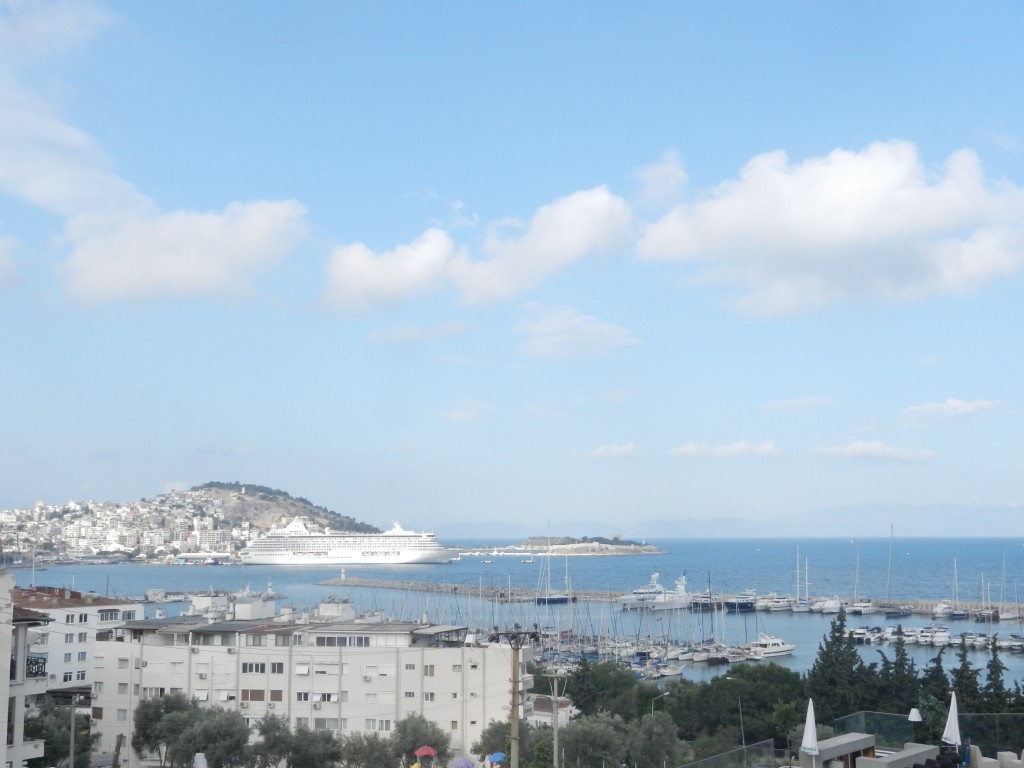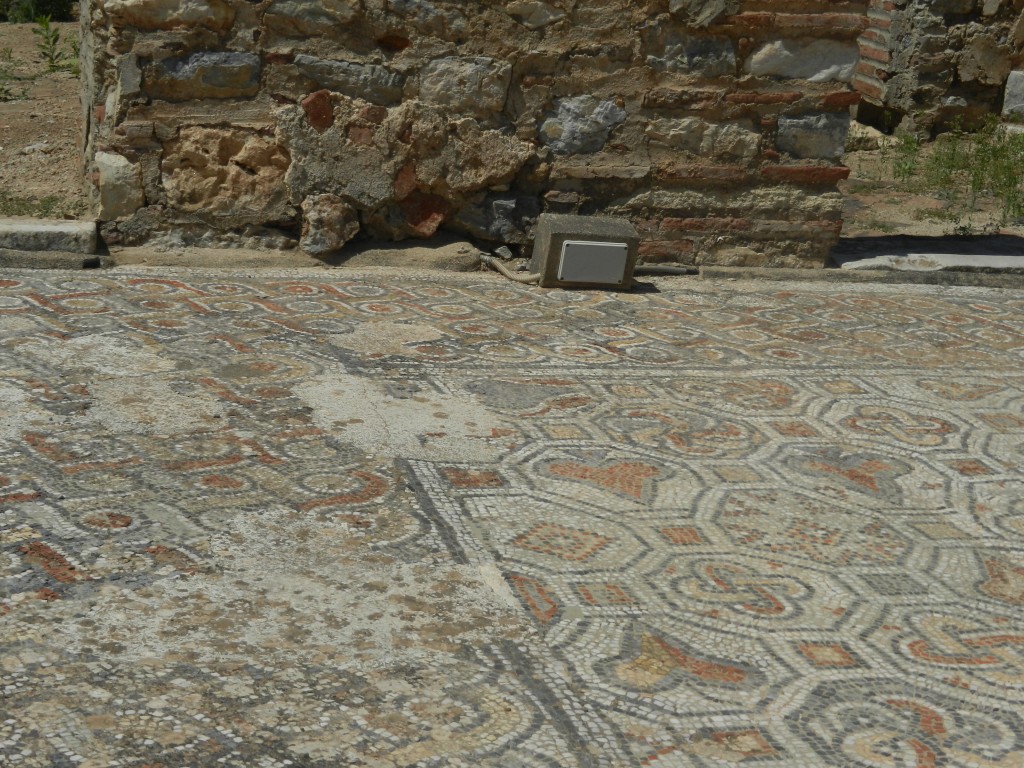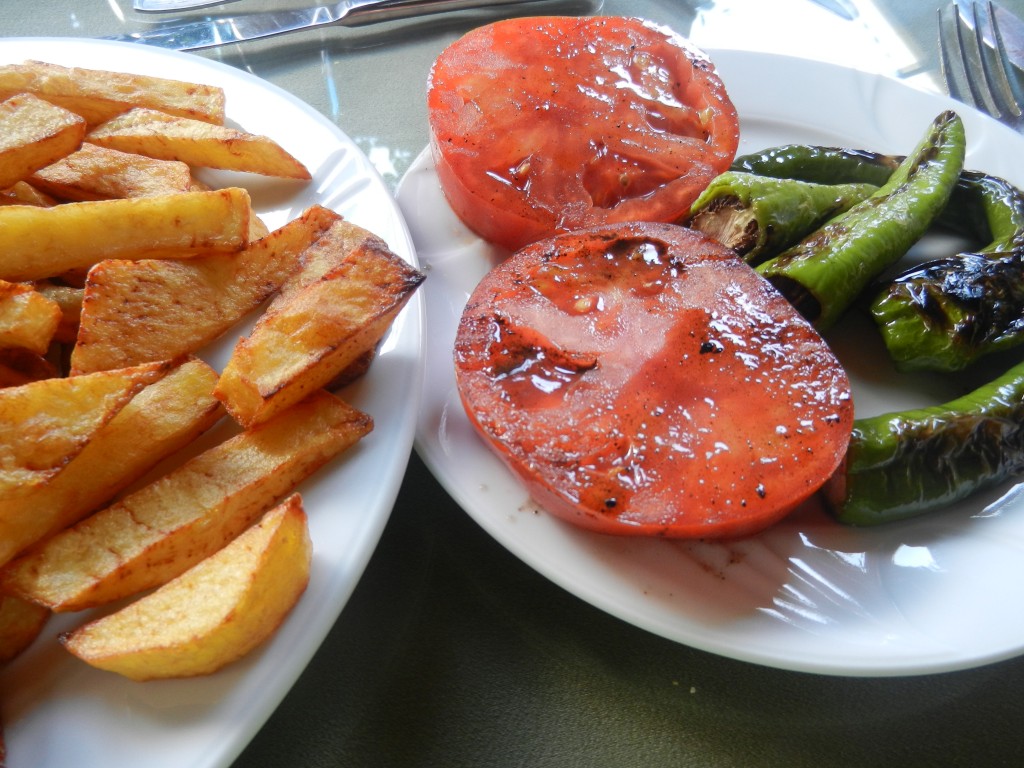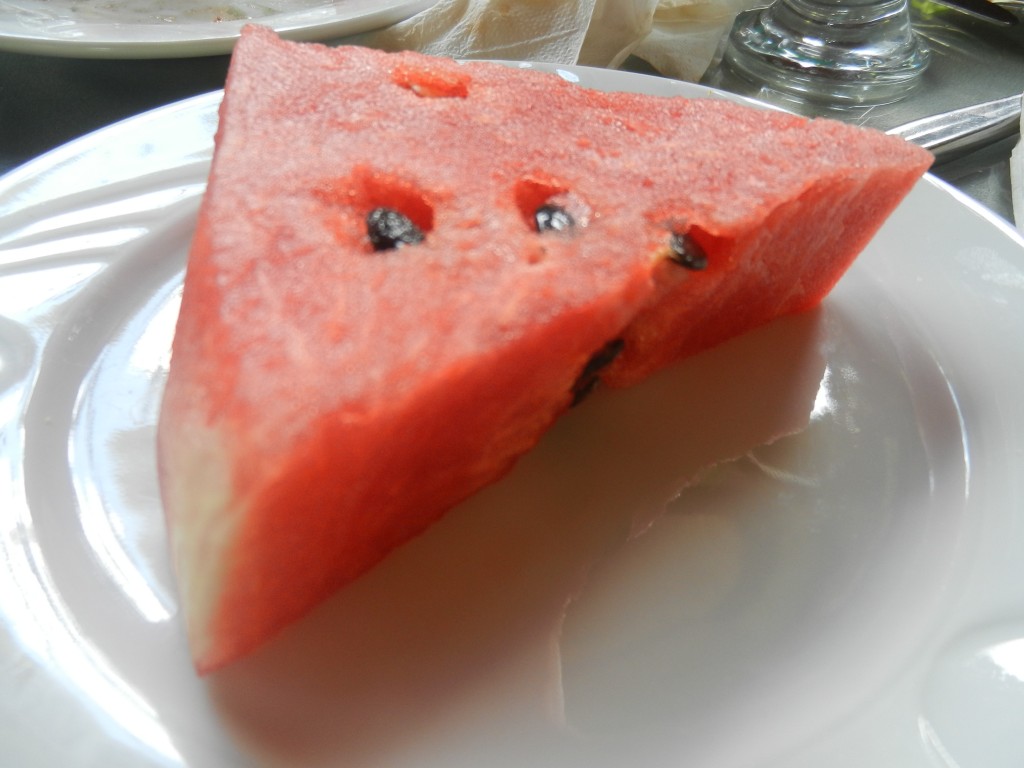Day#8 of my Turkey vacation had arrived!
Breakfast at my Kusadasi hotel was served poolside, on the outdoor patio overlooking the Aegean Sea! My breakfast included Turkish figs, watermelon, bread and jam, and part of my leftover simit from the previous day. I must re-iterate how wonderful the local figs and simits are!
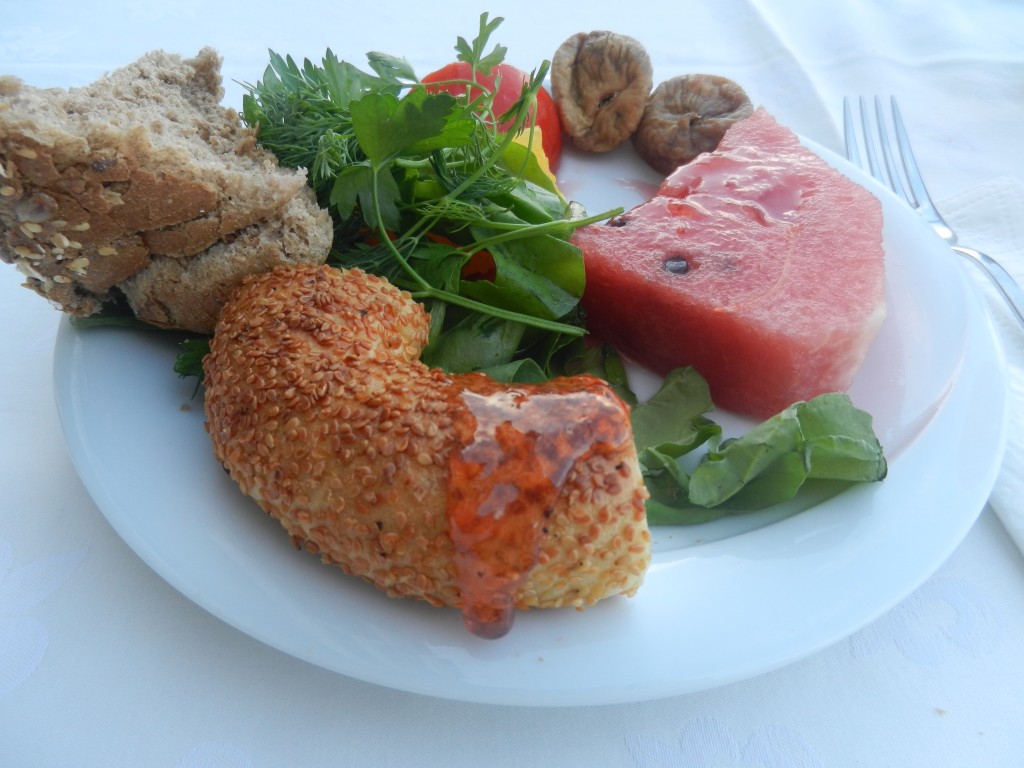
As I walked outside for our tour bus pickup, I glanced at the hotel’s entrance and noticed the ever-so-popular blue eye symbol(to ward off evil) on a glass ornament hanging on the lobby wall.
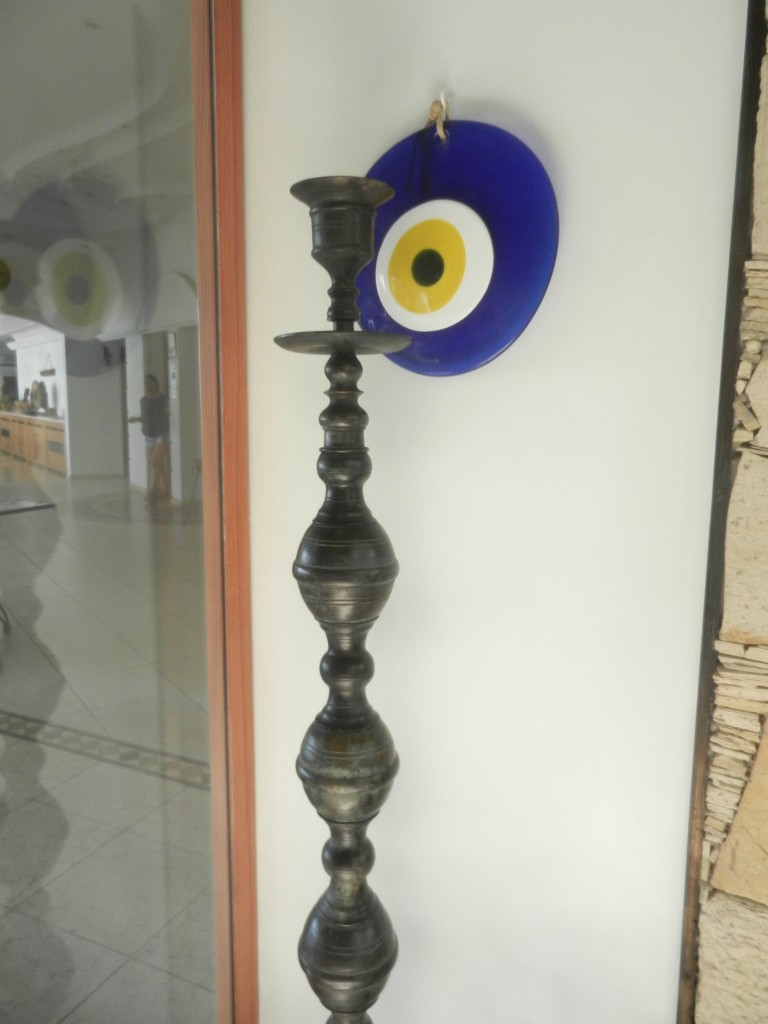
This was to be an exciting day! The ancient city of Ephesus was first on our agenda. This ancient Greek city was built several centuries BC. The State Agora was the political center of ancient Ephesus, built around the 6th century BC. Governmental matters were discussed here.
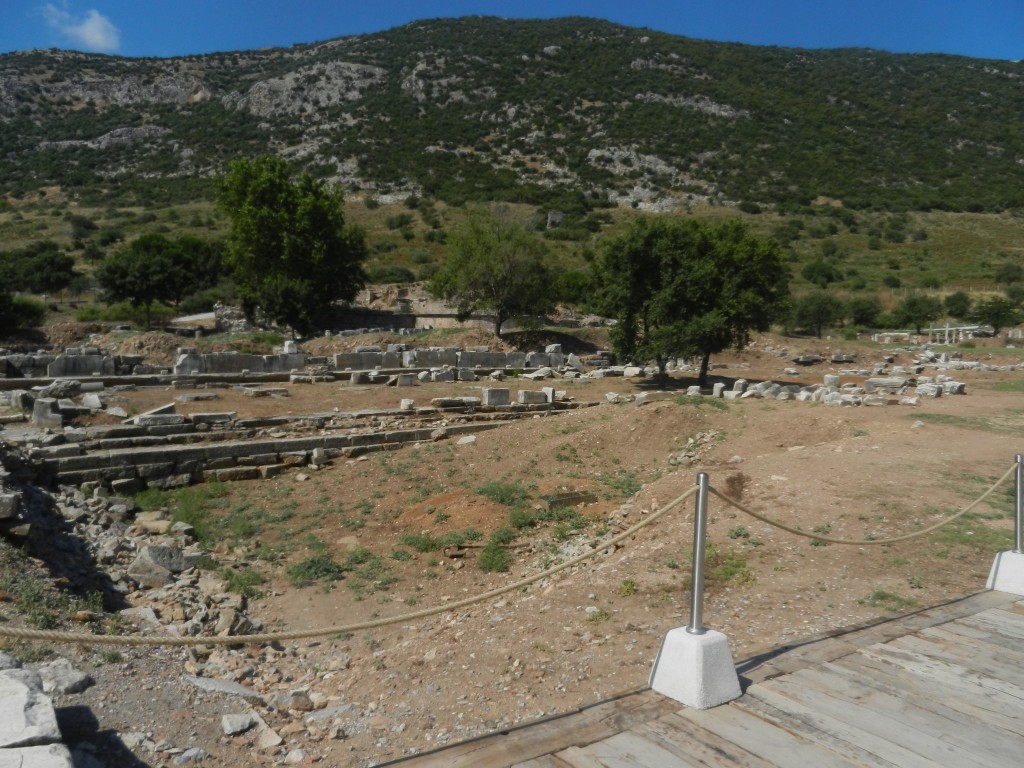
The individual markets’ walls have been knocked to the ground due to earthquakes over the centuries.
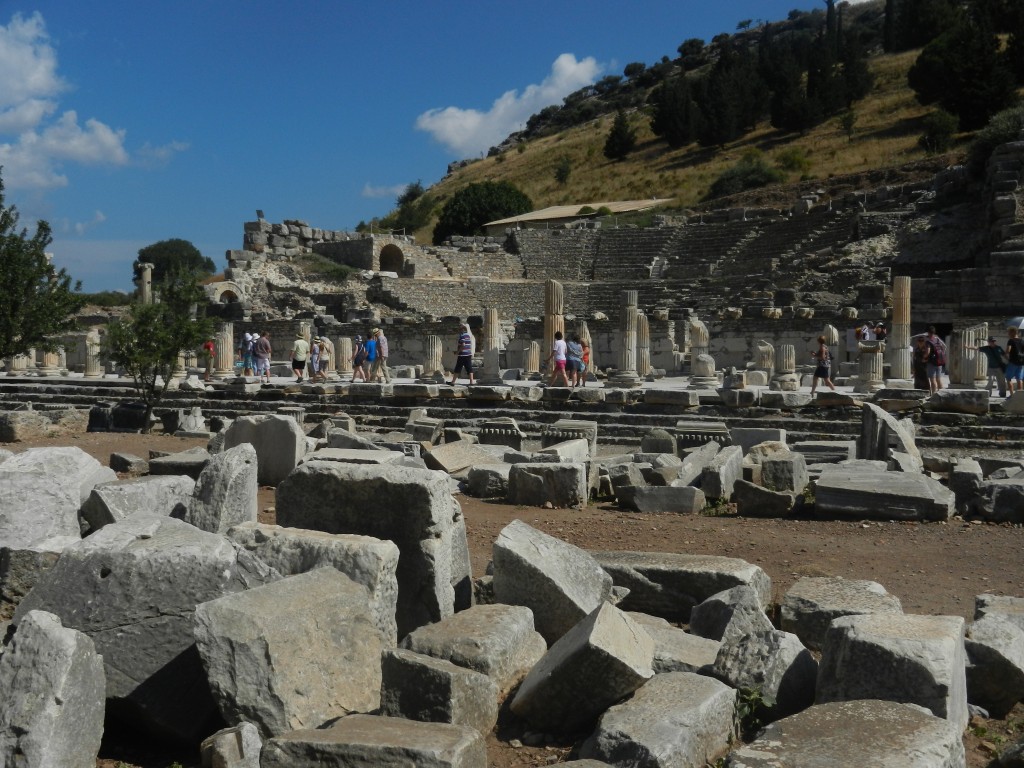
To the north of the state agora was the market basilica. This arcade was used for commercial business, as well as law court meetings. It was constructed during the first century AD during the reign of Roman emperor Augustus. Initially, it consisted of Ionic columns. However when Augustus came into power, he changed the columns into Corinthian order.
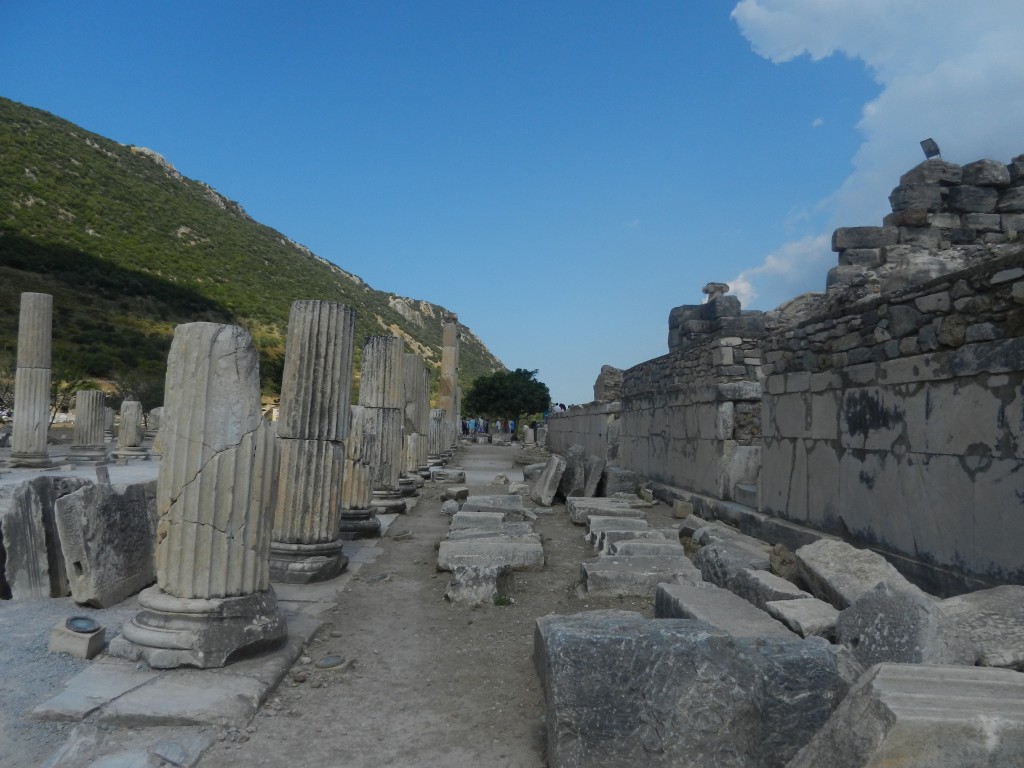
The Varius Baths were built during the Hellinistic Period, then upgraded during Roman and Byzantine times. These marble baths offered both hot and cold water. During the 2nd century AD, sitting rooms and reading rooms were added.
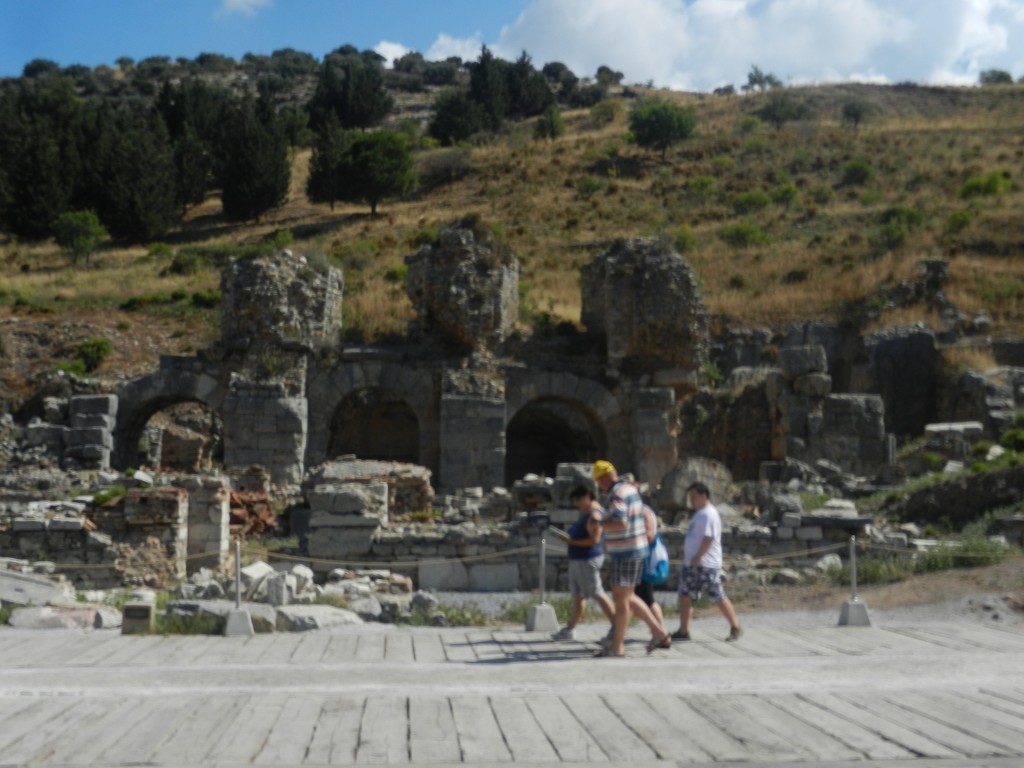
The Odeon is a small theater constructed around 150 AD. It was used primarily for concerts and plays. Corinthian style columns made of granite adorn the upper part of the theater.
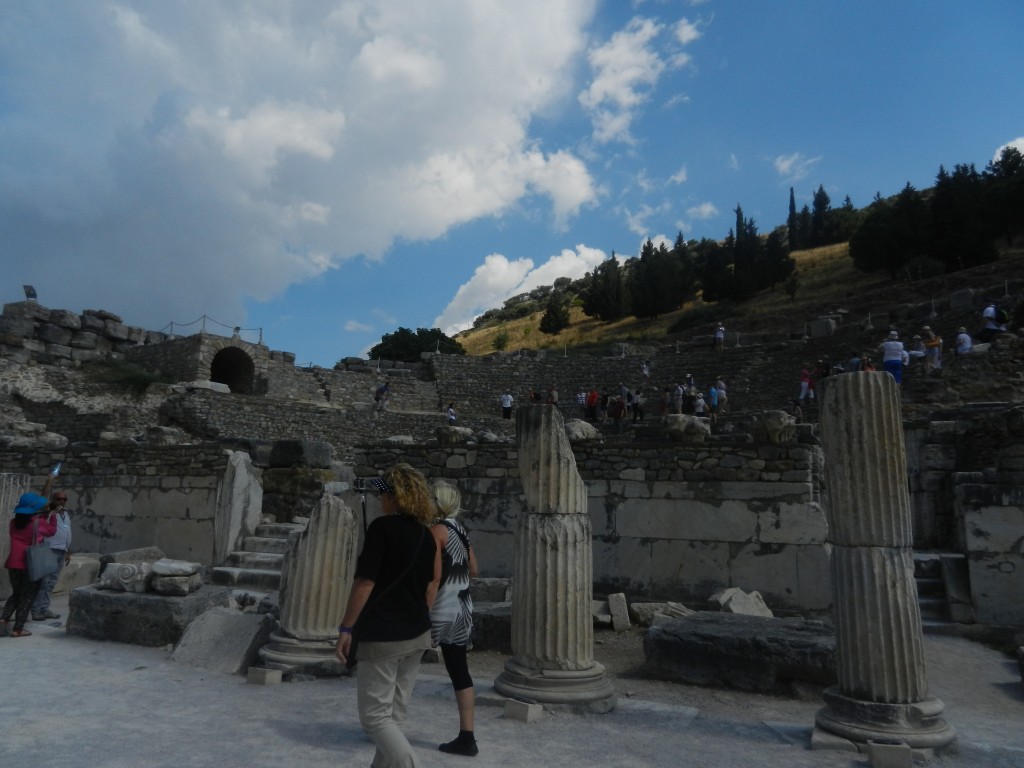
Fragments of pillars and rooms of a royal family’s home, lie in the space adjacent to the Odeon.
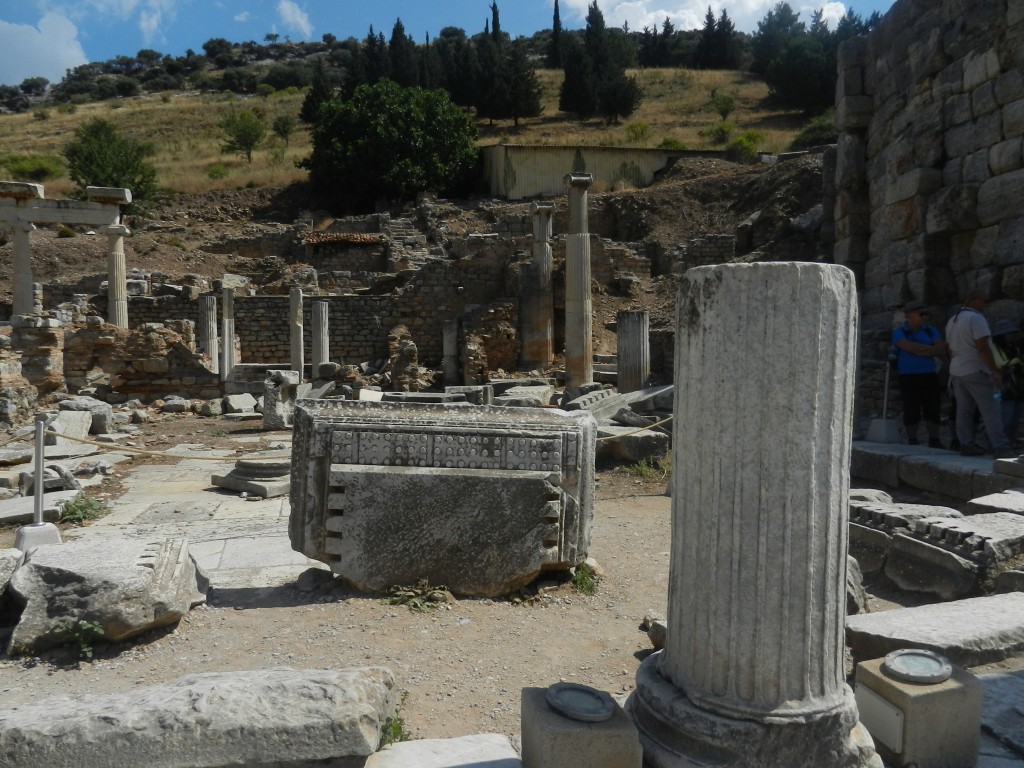
The Prytaneion contained administrative offices, with a large hall and courtyard. Religious ceremonies and banquets were held here. A sacred flame remained permanently lit, representing the heart of Ephesus.
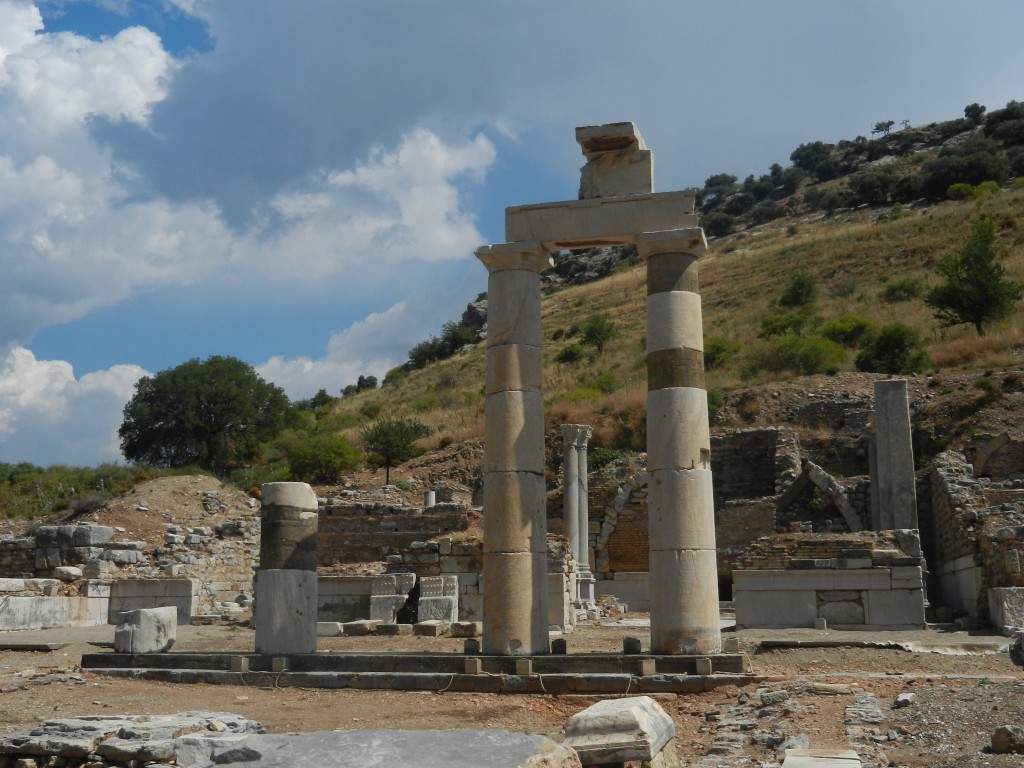
The Memmius Monument was a memorial built to Caius, son of Caius, and grandson to dictator Sulla. Their likenesses appear sculpted into the stones, signifying Sulla’s victory over those who had attacked the Romans. It was erected in the first century AD during the reign of Emperor Augustus. It was eventually converted to a fountain, 300 years later.
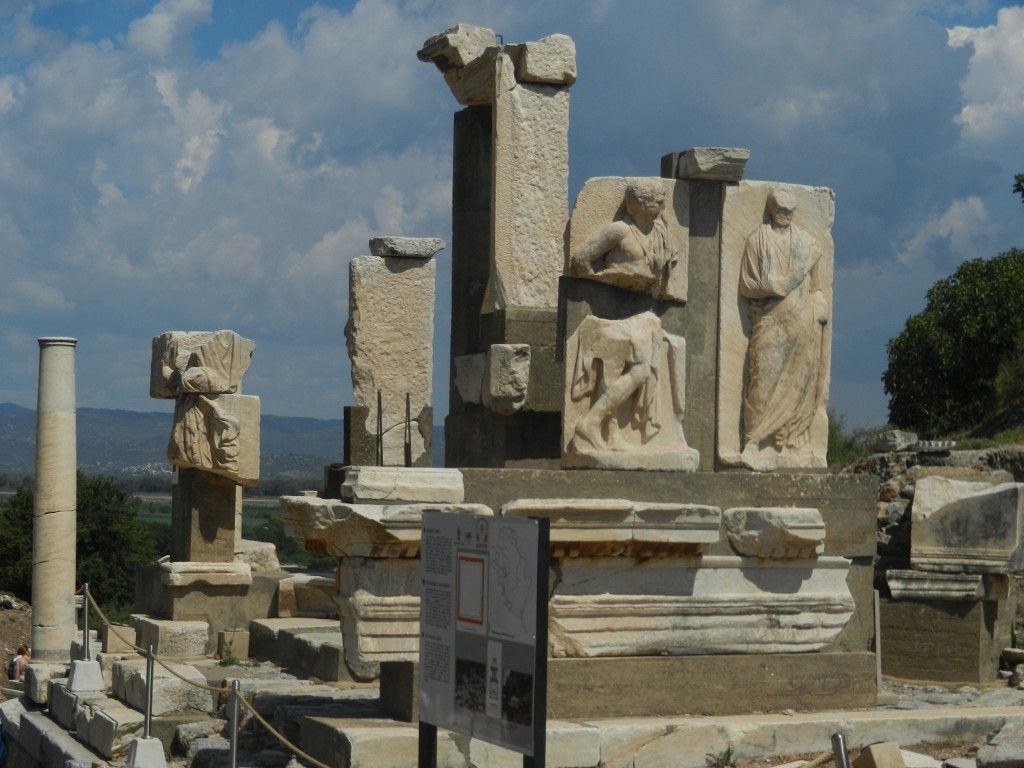
We next walk by what are the remains of an altar dedicated to Artemis.
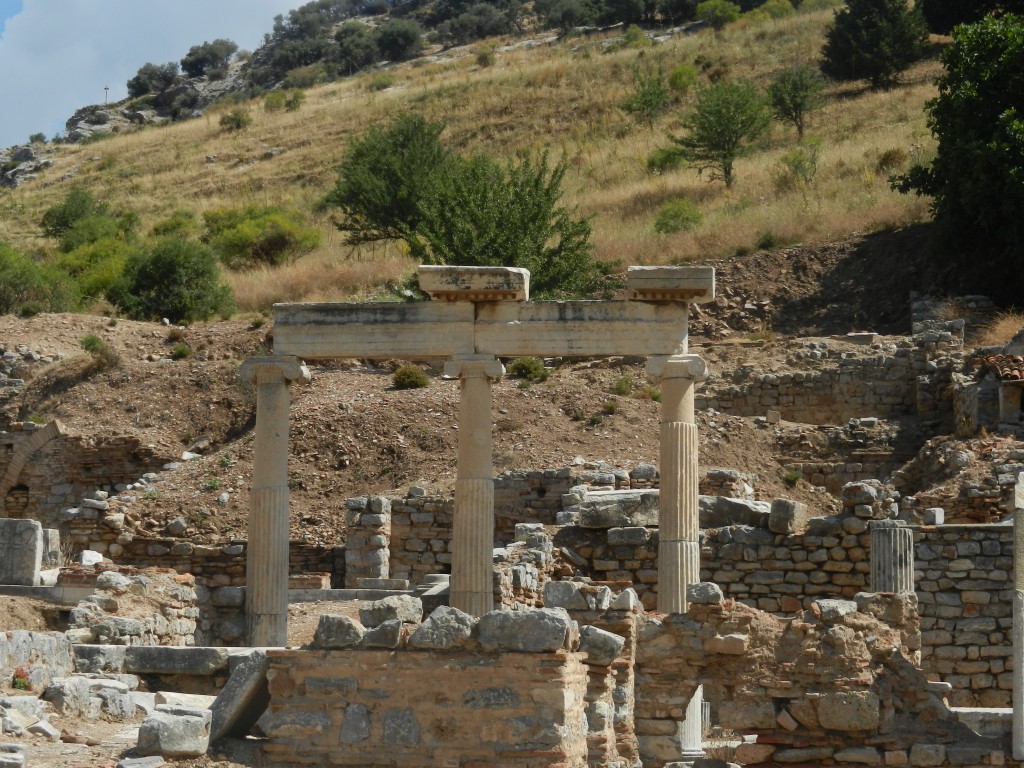
Domitan was the first emperor who allowed the Ephesians to dedicate monuments to the Romans. More recent research has indicated that it was emperor Titus, for whom the temple was dedicated. The other significant act from Domitan was that he had banished St. John to the Greek island of Patmos.
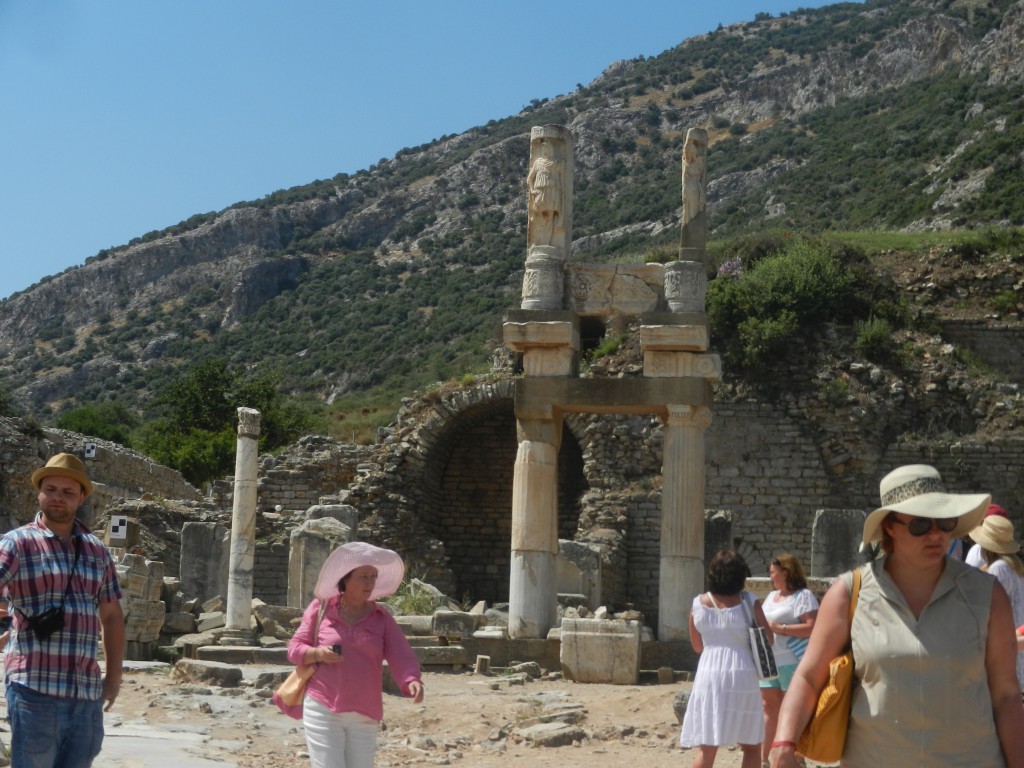
A stone carving, dedicated to the goddess Nike can be found at Ephesus. She represents victory, strength, and speed.
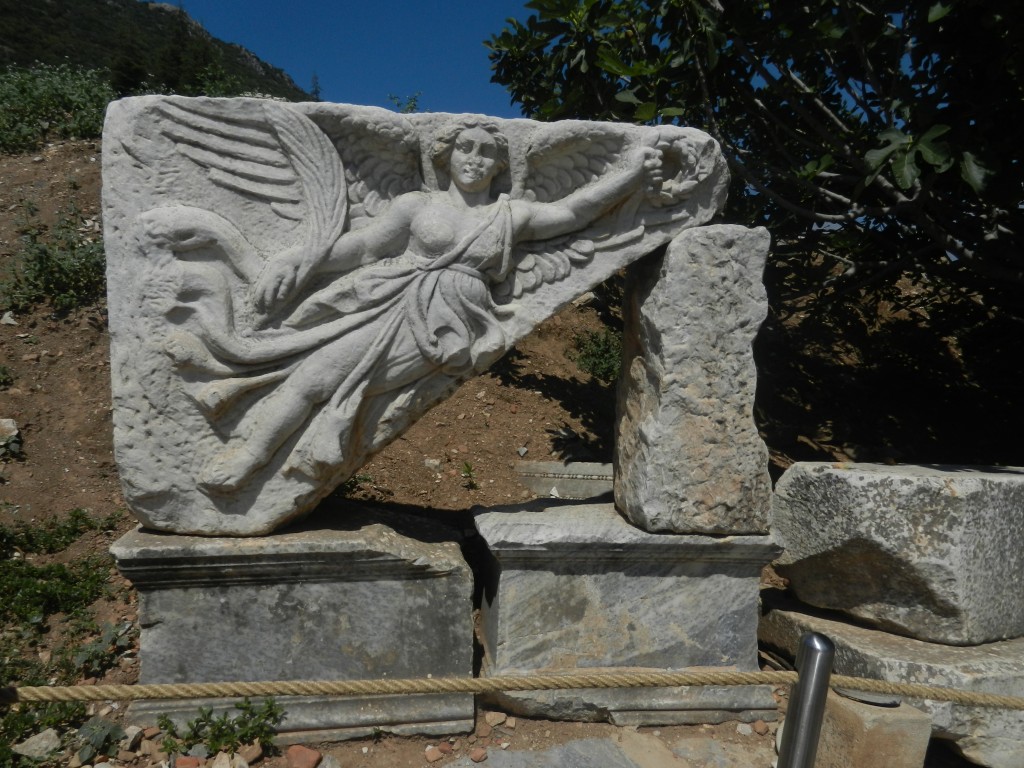
On the opposite side of the plaza, a stone carved relief of a snake is located. This is the symbol currently used to represent the medical field.
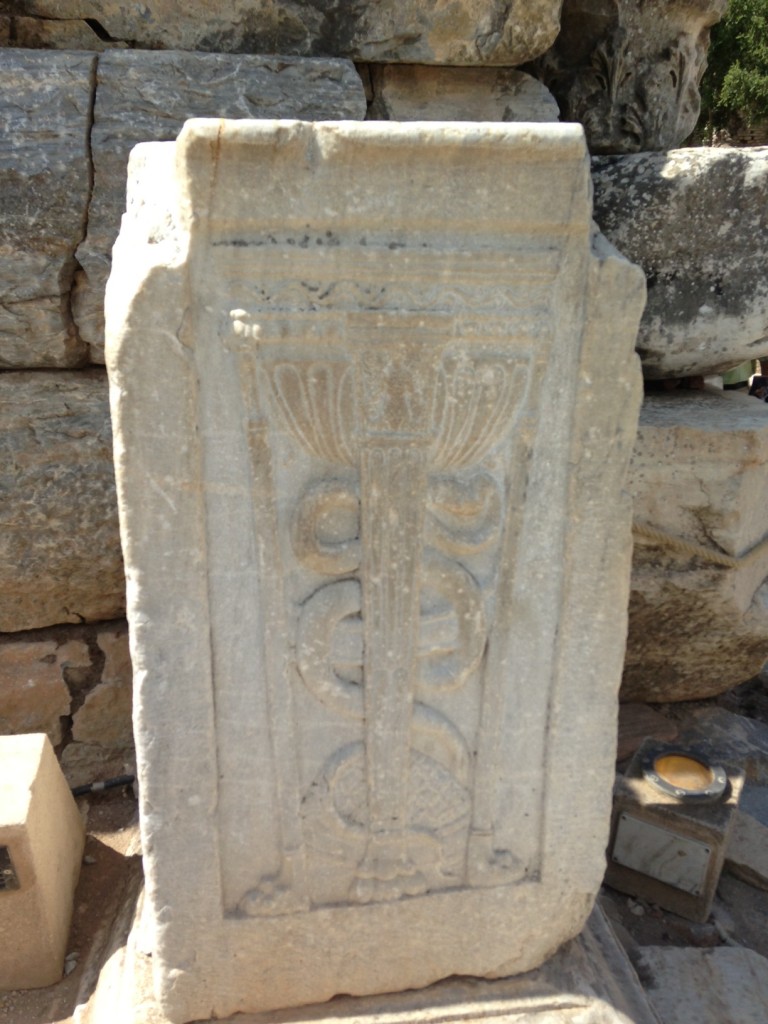
Curetes Street comes into view. This long pedestrian way leads to the Library of Ephesus. The main street begins after passing through “Hercule’s Gate”: large, upright stone columns, with the likeness of Hercules carved into them.
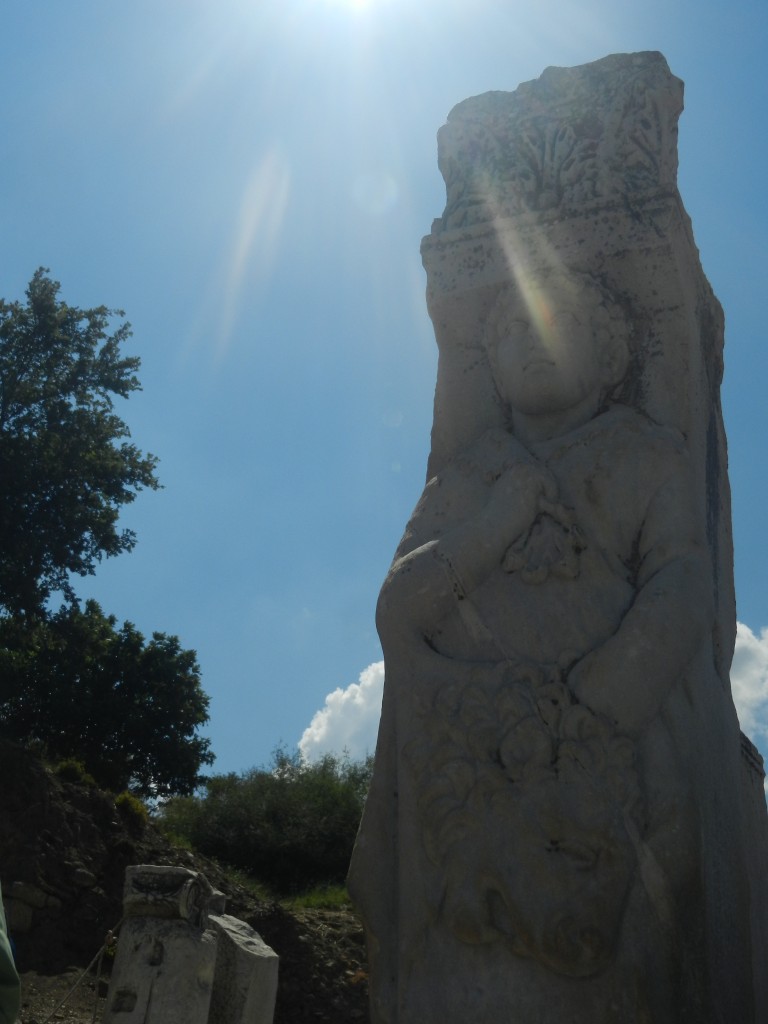
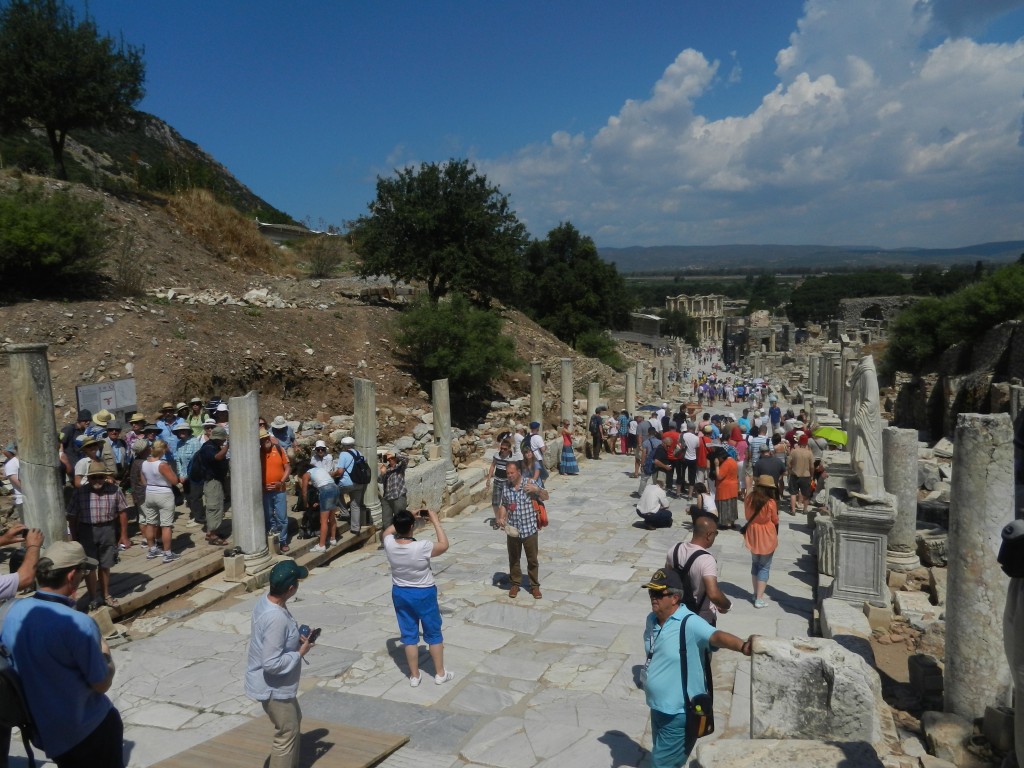
Trajan Fountain was built during the 2nd century to honor the emperor Trajan. The fountain’s pool was decorated with statues of Dionysus, Aphrodite, and Satyr, and members of the emperor’s family.
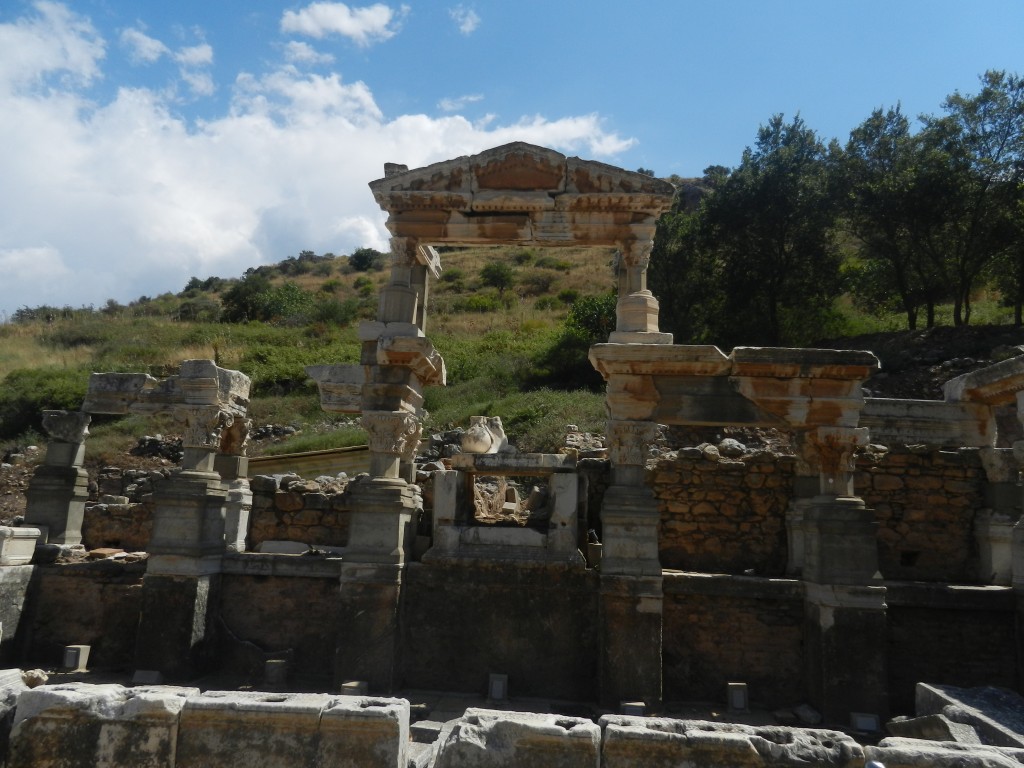
Terraced houses lined with gorgeously tiled floors were located on a hill to our left. These were “houses of the rich”. Six residences were built on three terraces, of which the oldest dated back to the year 1 BC. Their heating system used clay pipes beneath floors and walls. Cold and hot running water also were available in the homes.
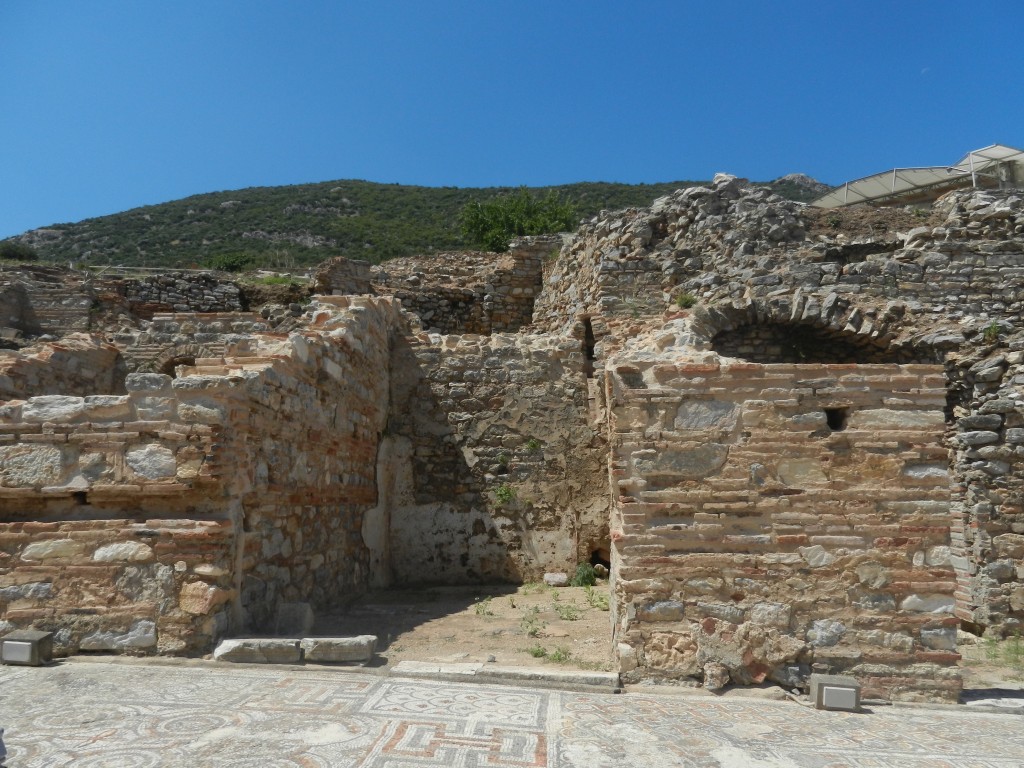
The Temple of Hadrian was located across the street, to the right. Now under renovation, it is one of the best-preserved and appealing structures in Ephesus. It was dedicated to the Emperor Hadrian who visited here from Athens in 128 AD. The façade of the temple has four Corinthian columns. Within the temple, above the door, a Medusa figure with leaves displays. Pedestals in front of the temple contain inscriptions for statues of the ancient emperors of that period. To the sides of the door, friezes of several mythological gods and goddesses appear.
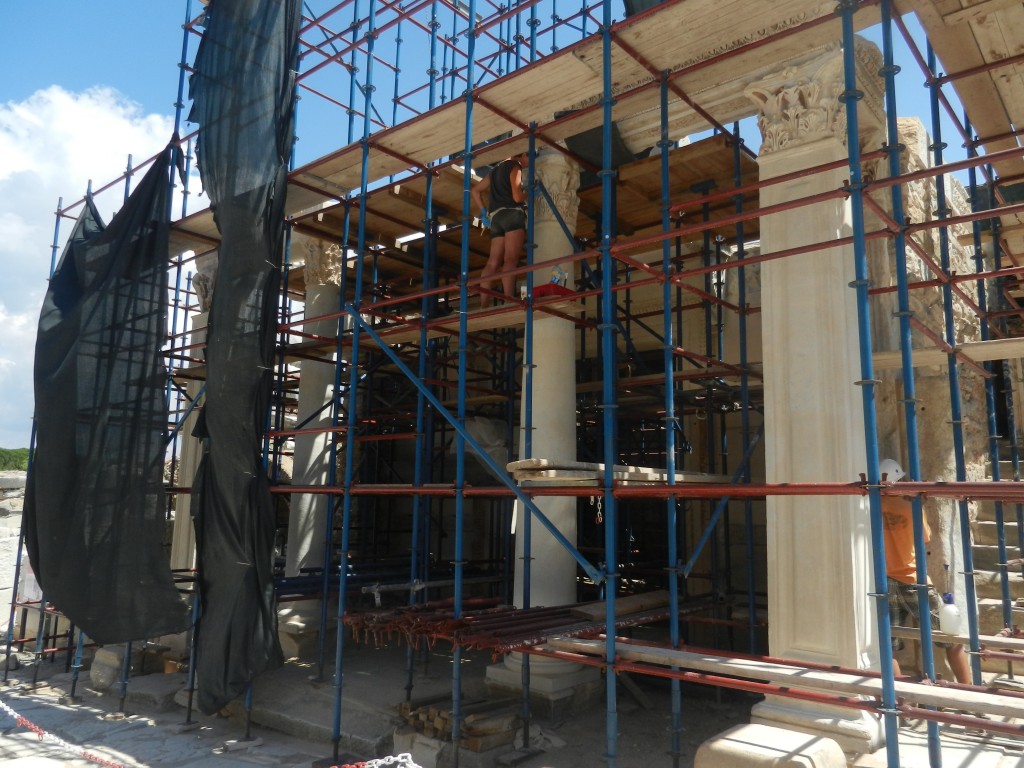
The Scolastica Baths contained public toilets for the ancient city. The latrines were lined up against the wall and had an underground drainage system. A fee was charged for use.
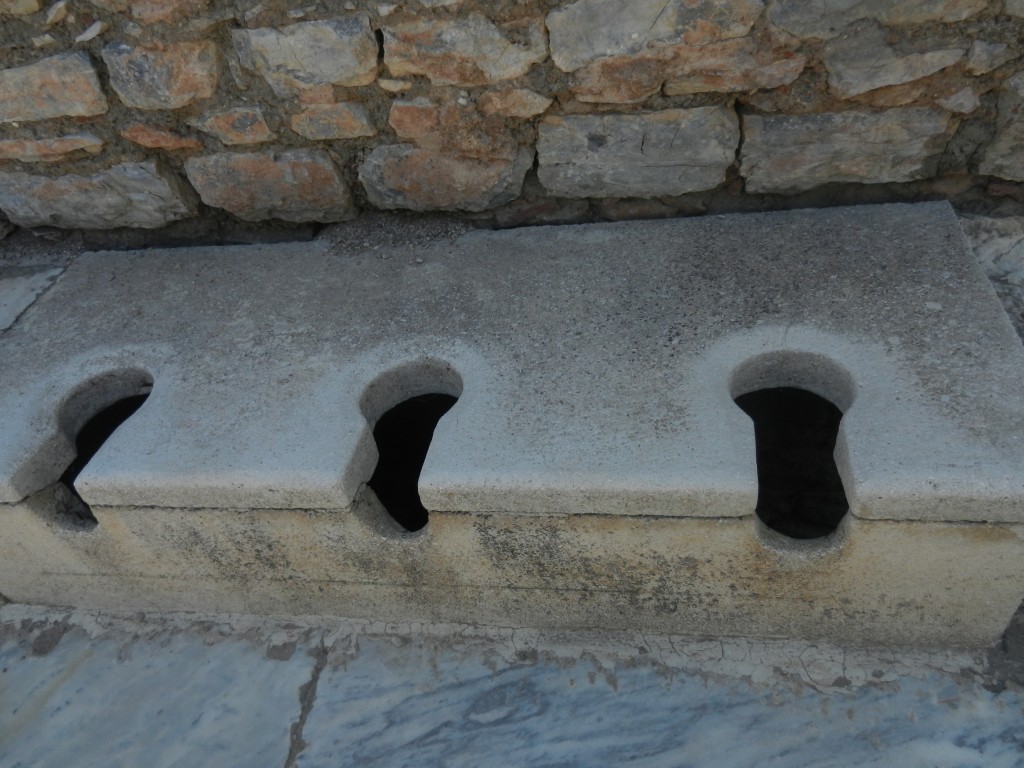
The Library of Ephesus is found at the end of the Curetes Street. It was constructed in the year 135 AD. The reason for its construction was that Gaius Julius Aquila wanted to show respect for his father Julius Celsus Polemaenus, who was the General Governor of Asia’s Roman province at the time. The sarcophagus of Celsus was placed underground in the cellar. This was also one of the largest libraries of the time and could have contained thousands of scrolls. Corinthian columns made up the exterior front façade. The exquisite library consisted of two levels and a reading section. An additional wall within the library was built to keep heat and moisture from destroying the manuscripts. Nine steps lead up to the library’s entrance. The columns between each of the entrance’s three doors are decorated with figures representing the Wisdom, the Knowledge, the Intelligence and the Fortune.
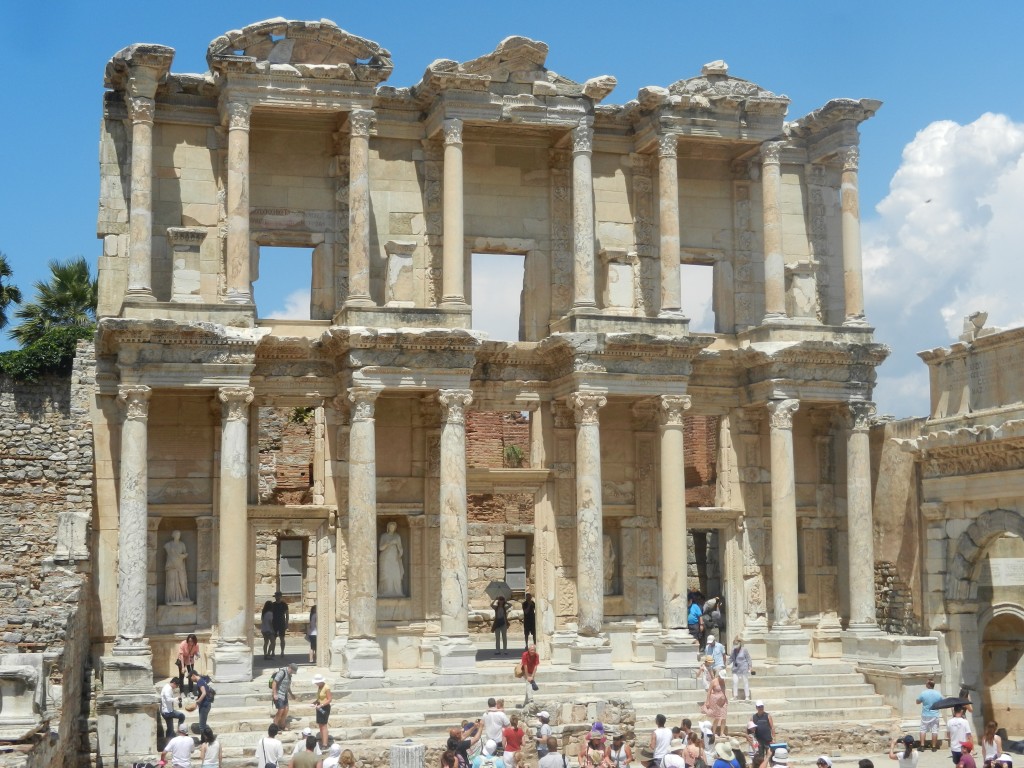
The commercial agora lies next to the Library. This massive square most likely contained a number of shops.
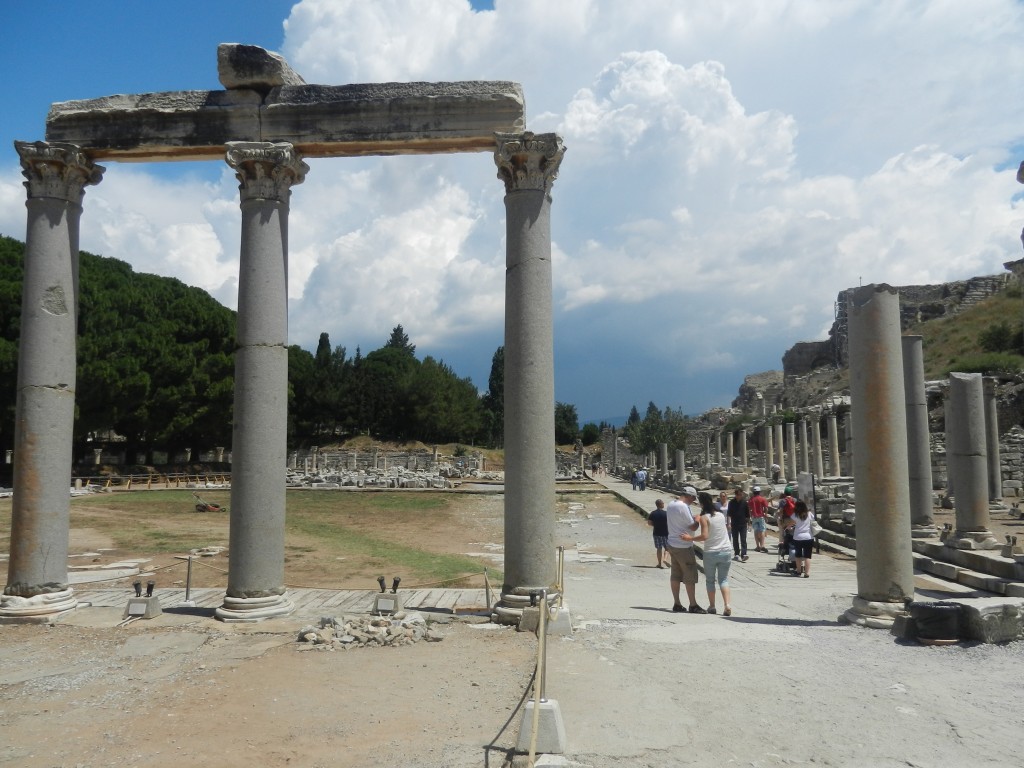
The marble road in front of the Library led to the Great Theater. It was built on the foot of a hill, as was customary for Roman theaters at the time. It overlooked the Harbour Street. Music and theatrical performances, as well as political and religious events took place at the theater.
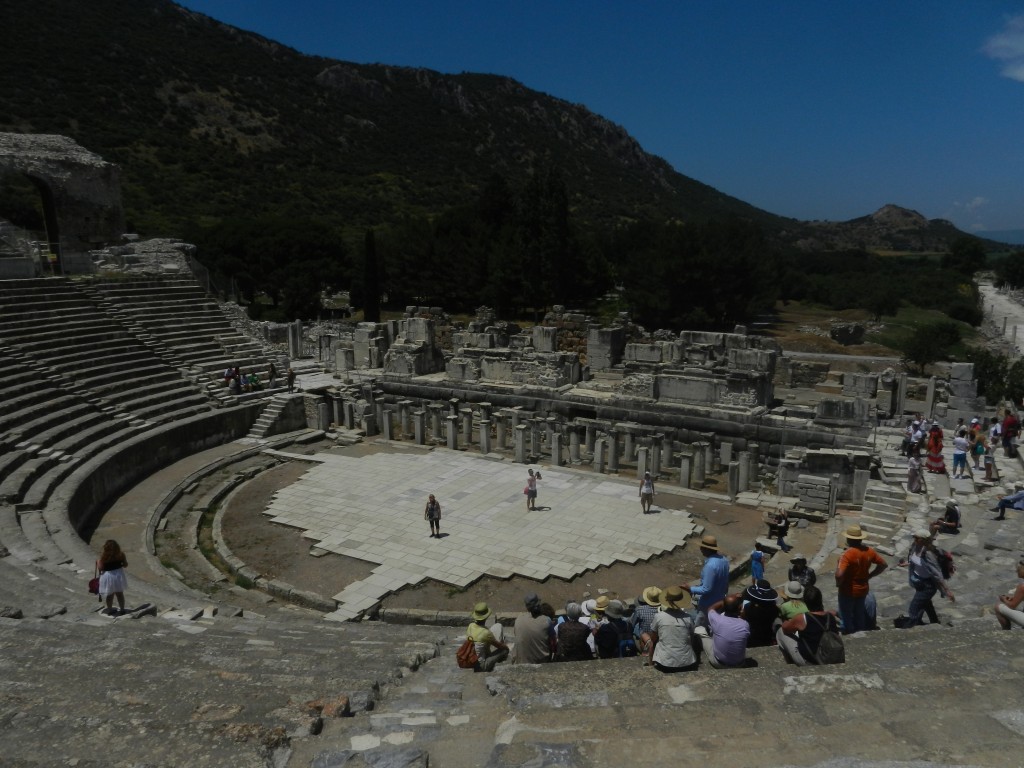
The remains of a gymnasium are located beyond the theater grounds. Vedius Gymnasium, dating back to the second century AD was granted funding by Publius Vedius Antoninus and his wife Flavia Papiana. Young Ephesians could attend the gymnasium to study sports, the arts, literature, and drama.
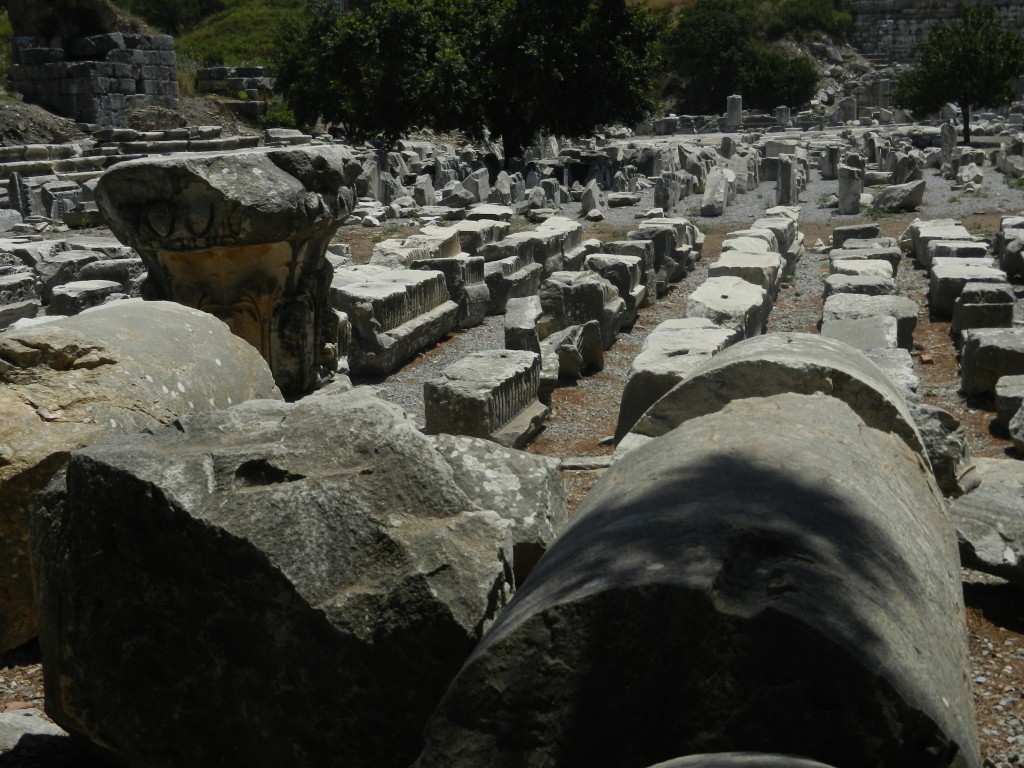
Ephesus was such an interesting place to visit! Our next stop was for a lunchtime meal. Our guide brought us to the Galata Restaurant. My appetizer consisted of eggplant and zucchini sauteed in a tomato sauce with a side of tomatoes and cucumbers and a second appetizer of fried, long green chili peppers cooked in olive oil with stewed tomatoes. My main entrée was fried potatoes slices. For dessert, I was given some watermelon. This was a satisfying and tasty lunch! Green peppers, eggplant(aubergine), and zucchini are staple vegetables in Turkish cuisine. Vegans will be happy to find these veggies cooked in various forms here: stir fried, baked, fried, and sauteed.
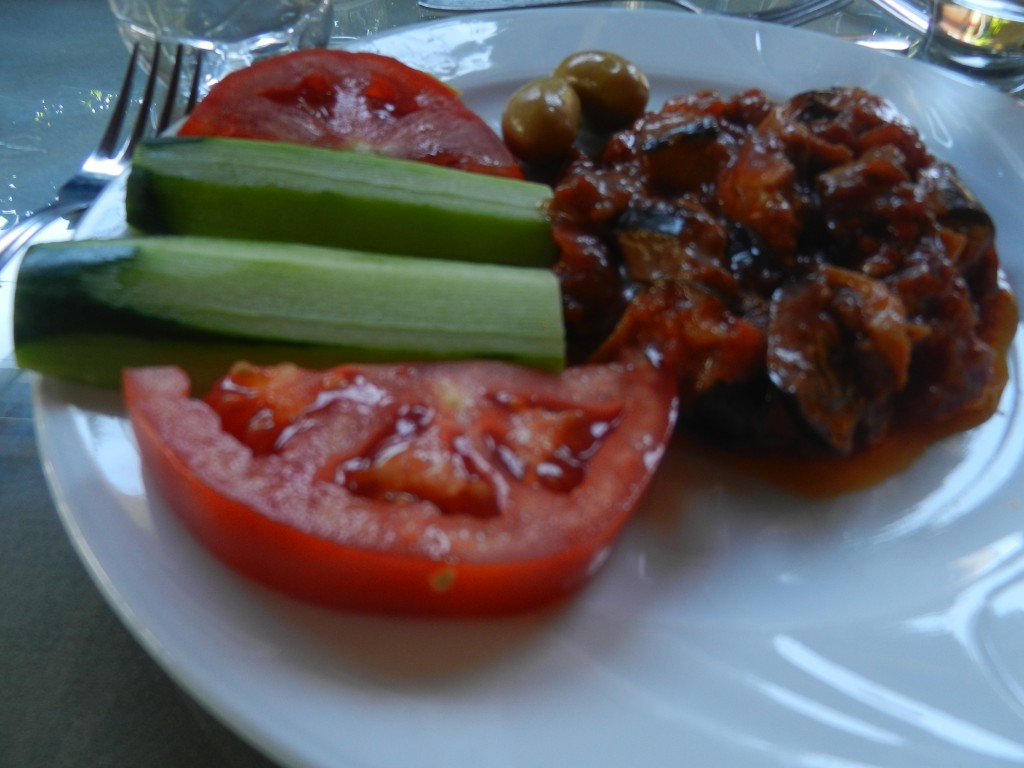
Next on our itinerary was The House Of The Virgin Mary. She was said to have lived here during the last several years of her life. Apostle John brought her to this spot on top of a hill. The house’s location was determined by revelations from a visionary nun. It is now a shrine. A small room to the right, is where it is thought The Virgin Mary slept. An underground spring provided running water to her in the house, and it led to the current fountain outside of the building.
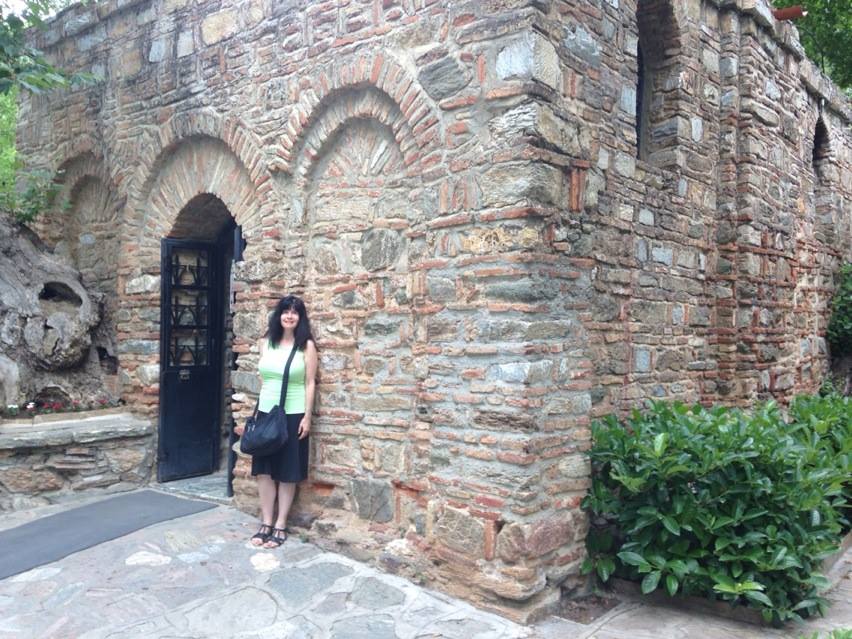
Our following stop was the Temple of Artemis, nearby in modern day Selcuk. The Greek temple was dedicated to the ancient goddess Artemis. Only its foundations and statues remain, after its destruction centuries ago. It is one of the Seven Wonders of the Ancient World. Artemis was the twin of Apollo, according to ancient myth. She was one of the most venerated dieties of the ancient Greek world.
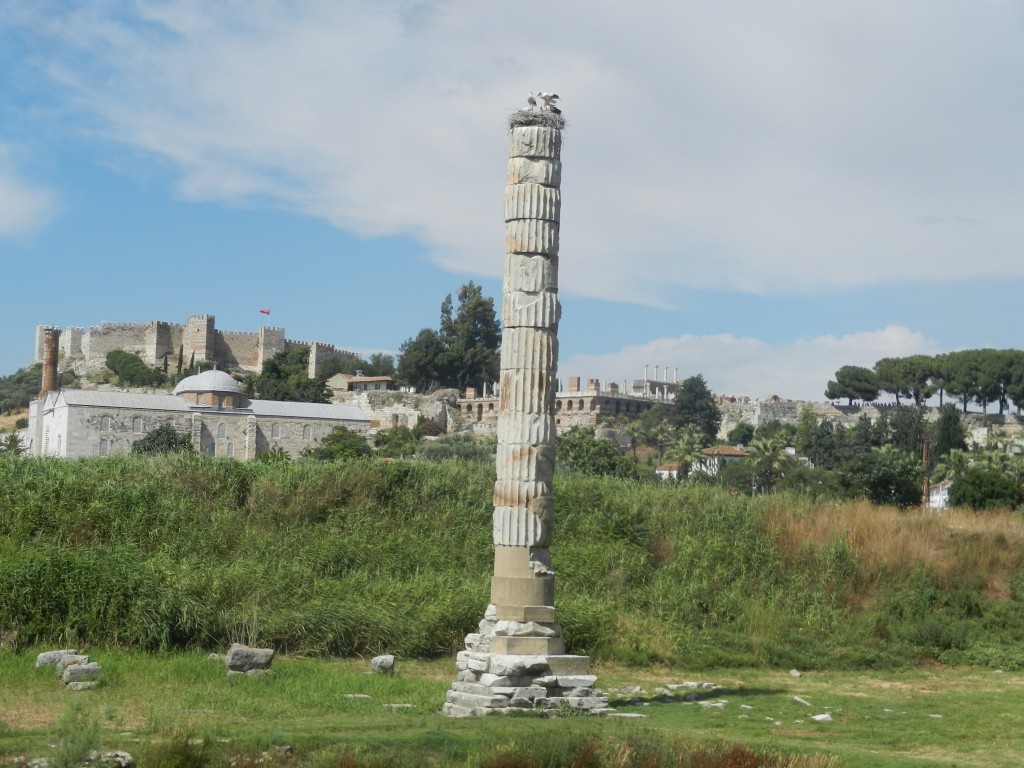
Our day’s tour had come to an end. We arrived back in Kusadasi, where we were to spend the remainder of the afternoon.
I headed over to the Bazaar. Small shops sold their wares, including pottery, clothing, jewelry, and little statuettes of local attractions.
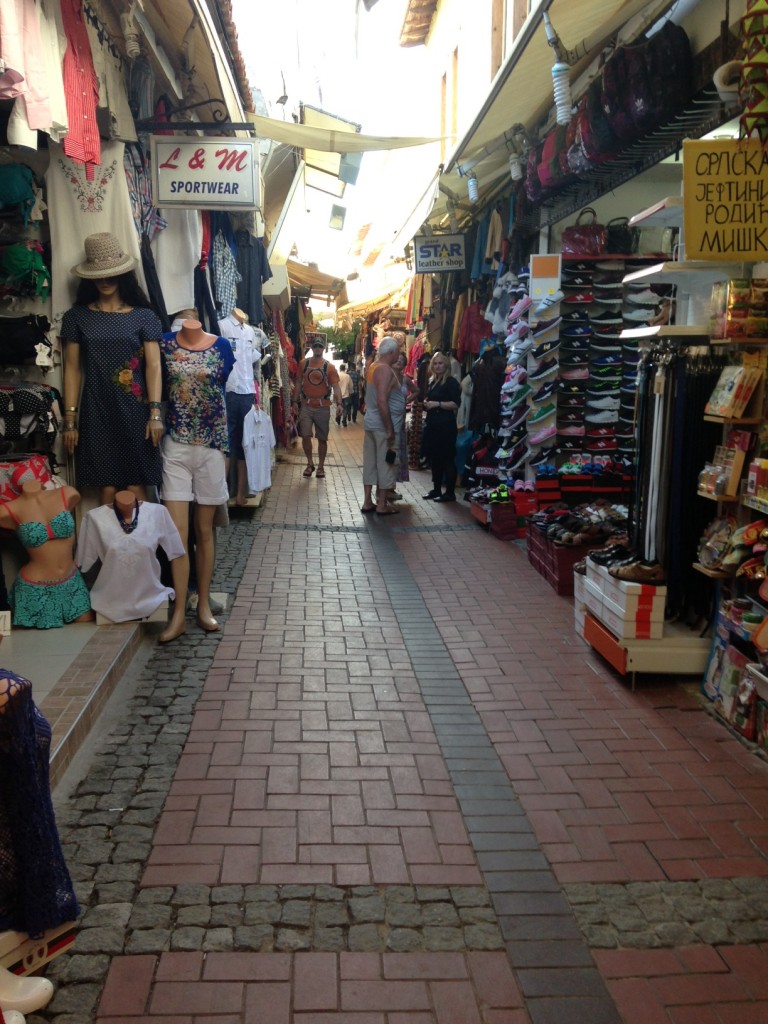
While awaiting my overnight bus, I walked around the center of town. Beyond the roadway roundabout, the palm trees met the Aegean Sea. Other trees with gorgeous deep pink flowers lined the boardwalk.
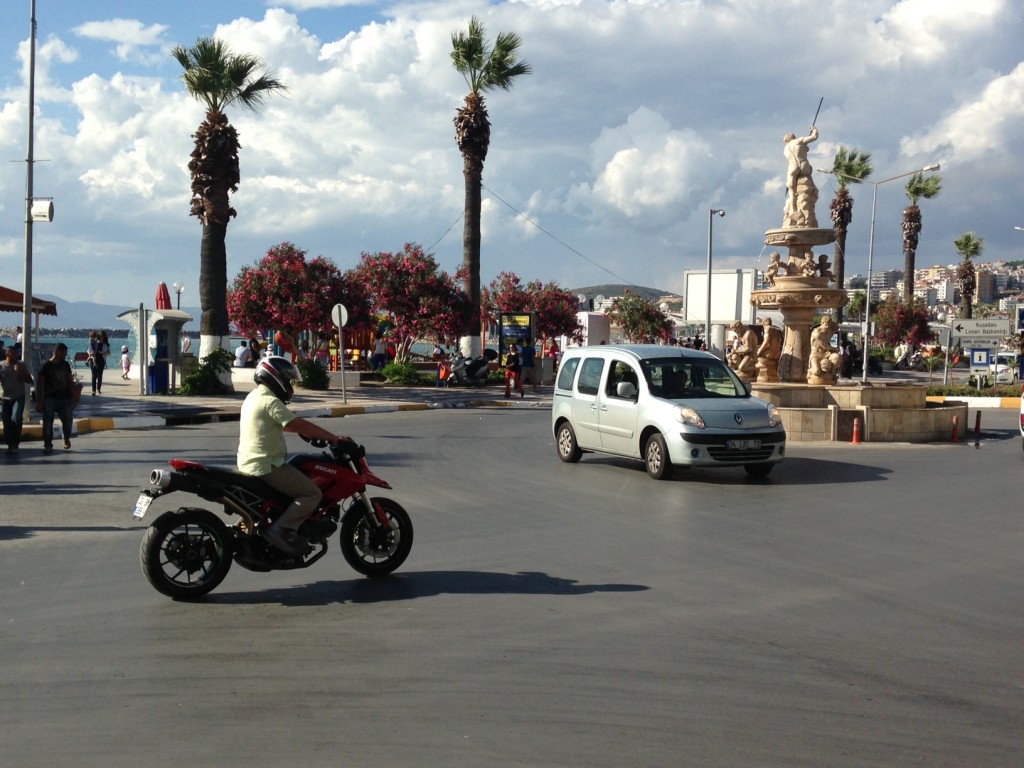
My walk along the waterfront was so relaxing. I was just strolling along, admiring the seaside view!
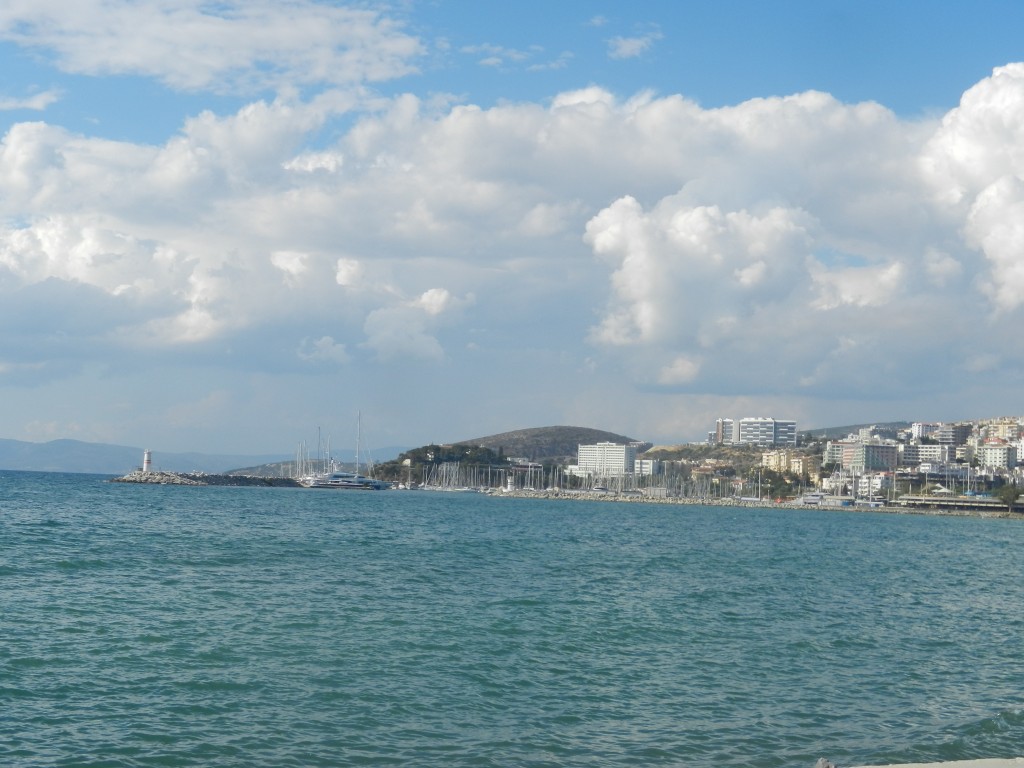
Dinner time had arrived. With my luggage in tow and only a couple of hours to spare before my overnight transport arrives, my dining options were limited to the waterfront boardwalk. Besides Saray Restaurant where I dined last night, the other two vegan-friendly restaurants(Avlu Restaurant and Koy Sofrasi Restaurant) in town were not within a feasible walking distance. One of the restaurants along the waterfront had outdoor seating and a magnificent ocean view, so I decided to dine there. For my dinner, I chose a salad. My beverage was the freshly squeezed orange juice. Earlier in the afternoon, I had purchased a simit at a bakery across the street, so I ate that along with my meal. It was satisfying and filling.
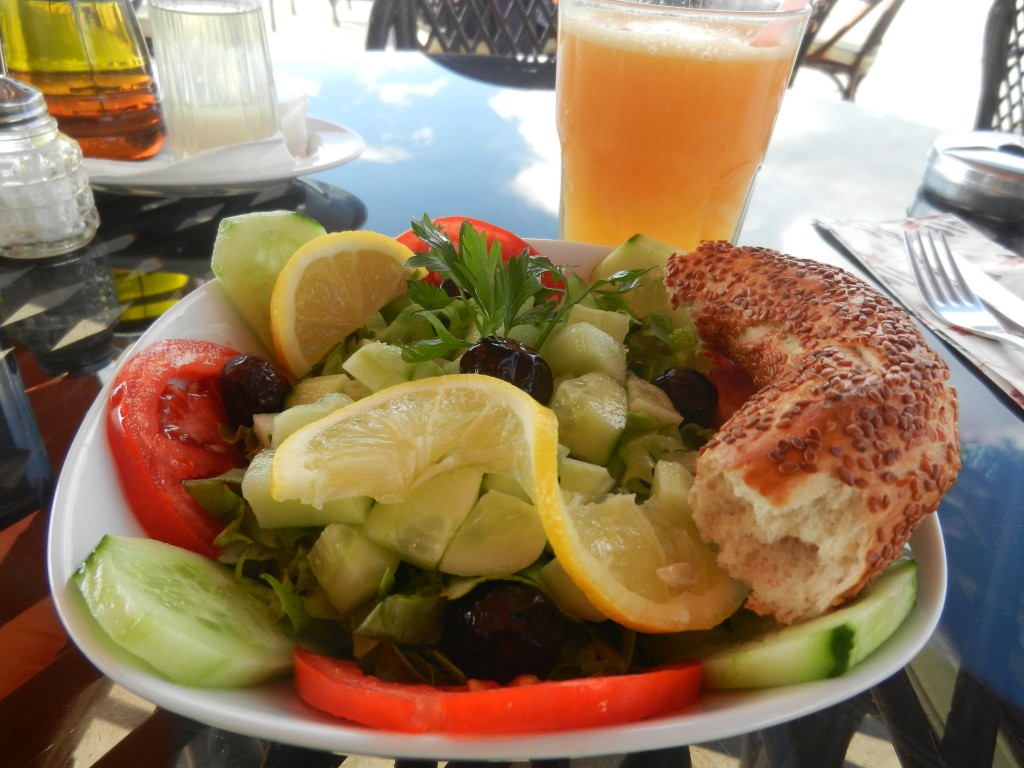
Prior to meeting my overnight bus to Cannakale, I strolled along the Kusadasi waterfront and admired the glorious view of the Aegean Sea at sunset!
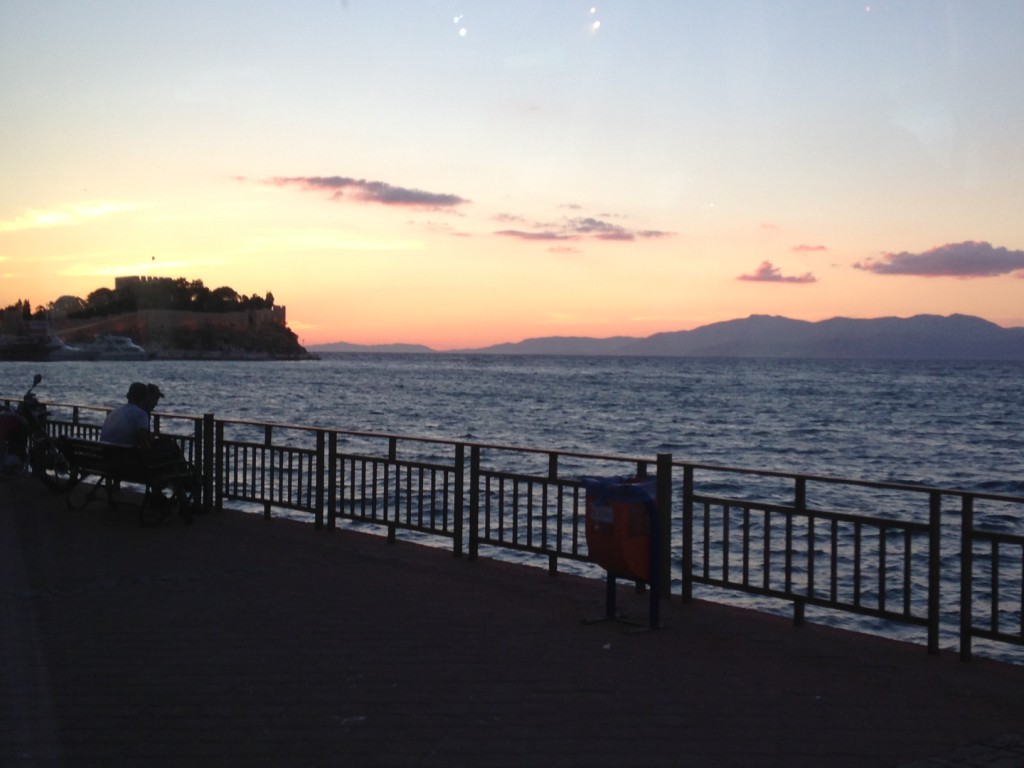
I truly enjoyed my educational and fascinating tour of Ephesus, The House Of The Virgin Mary, and the Temple of Artemis this fine day! As my overnight bus to Cannakale drove off into the sunset, my mind was filled with happy thoughts of my upcoming tour of Troy on the following day!
